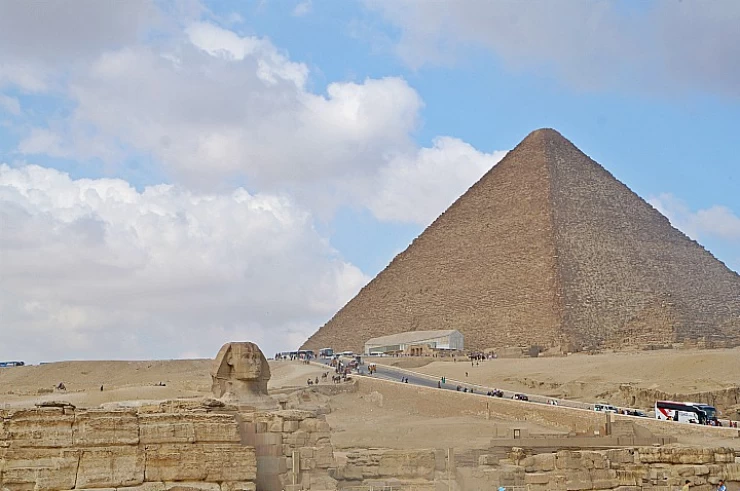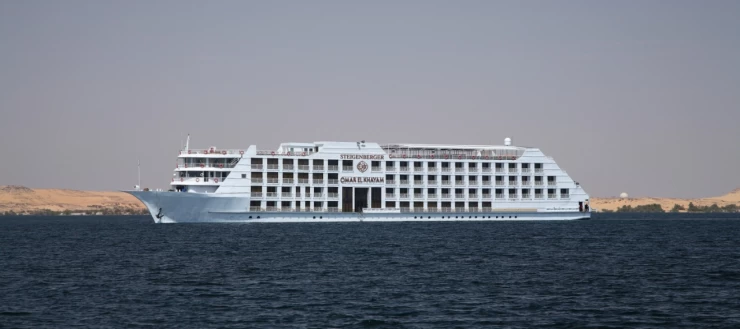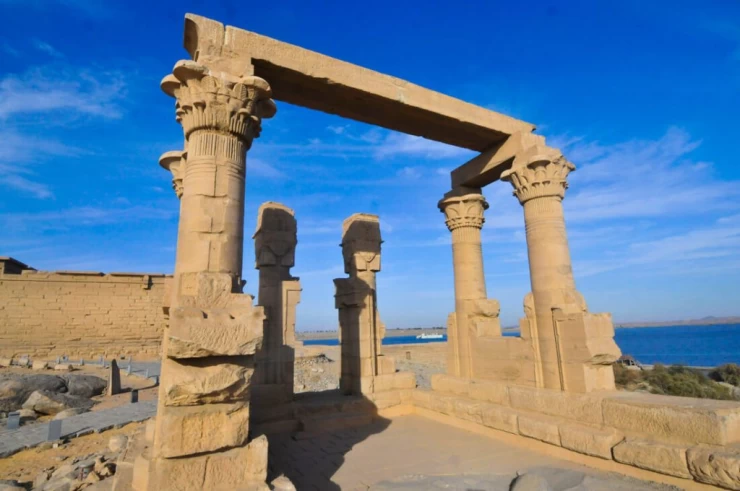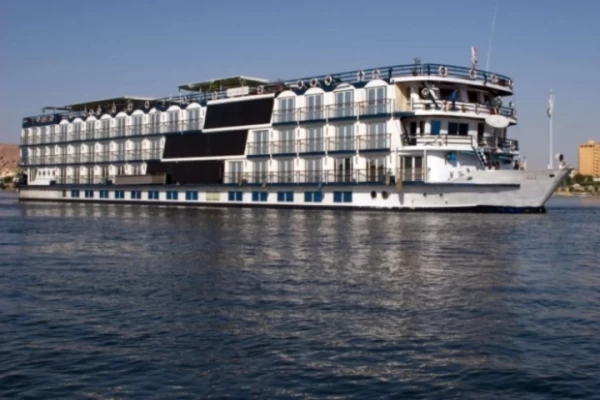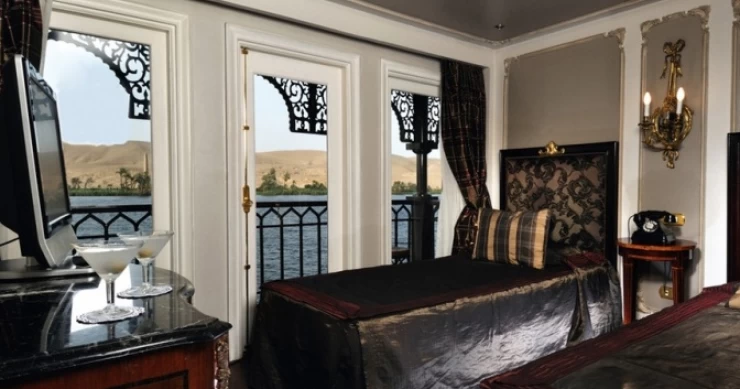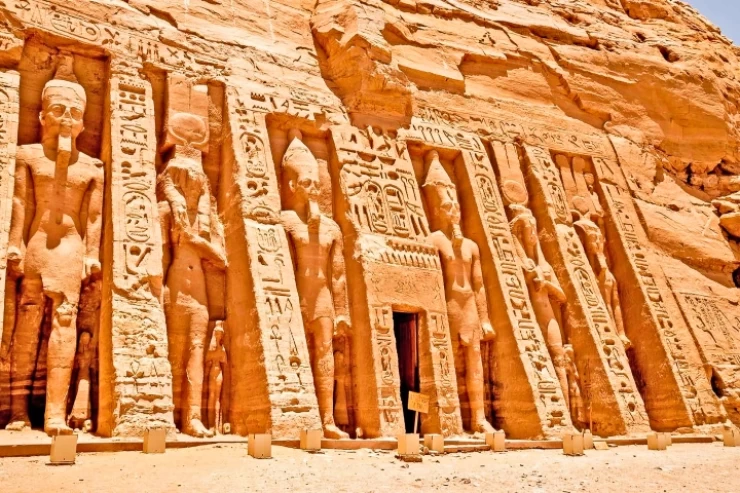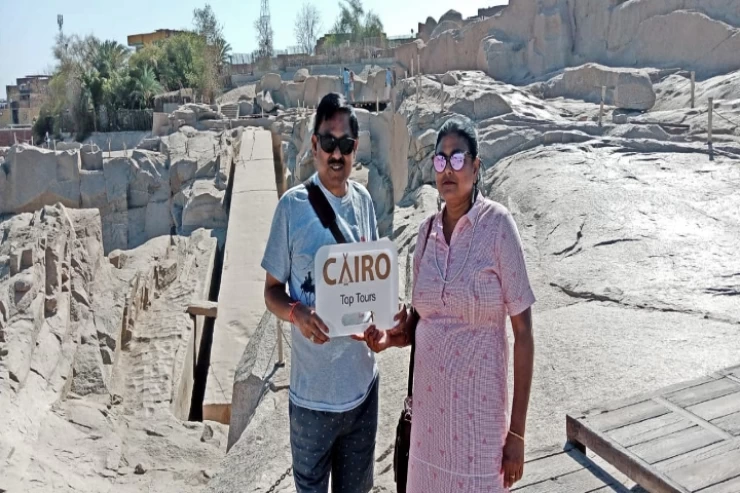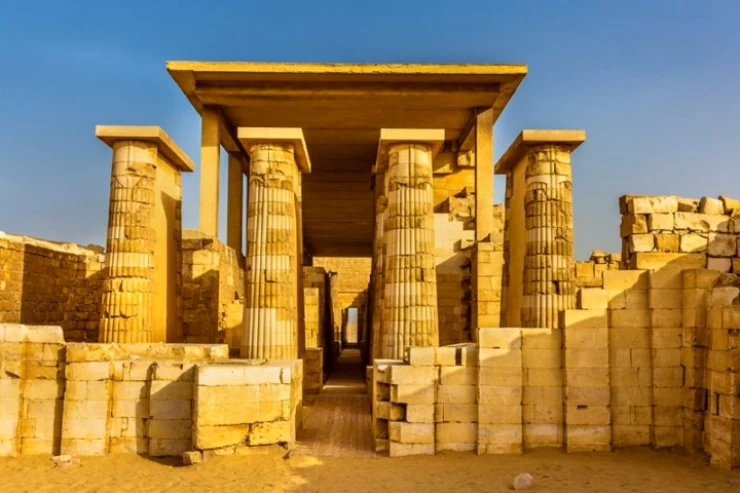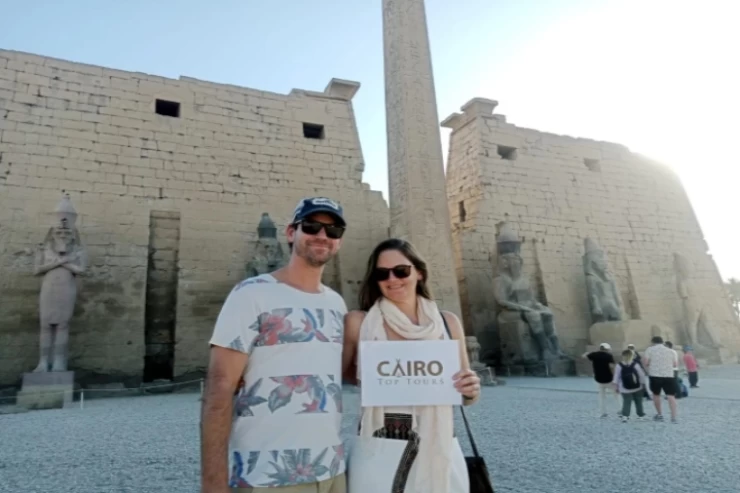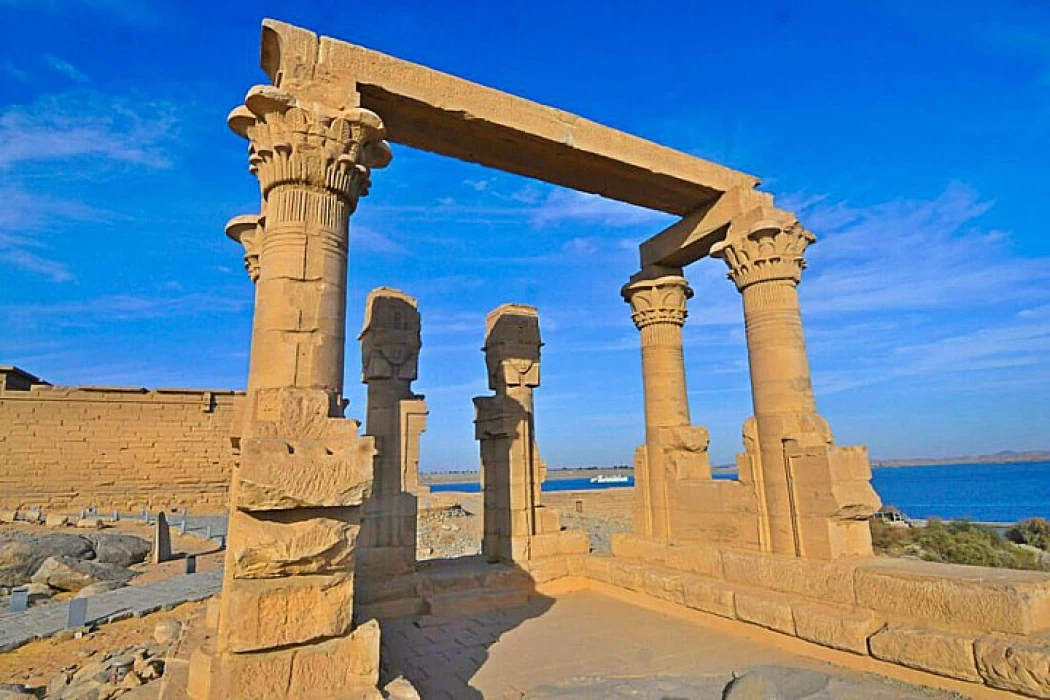
Kalabsha Temple in Aswan | Aswan Attractions
Some manuscripts and studies have shown that the temple is not on its original site but that it is now on the west bank of the Nile after the High Dam, where it was moved to protect it from high water and in anticipation of any floods. Approximately 50 kilometers south of Aswan, at Bab al-Kalabsha, was the original location of the ancient Egyptian temple known as the Temple of Kalabsha.
Despite its Roman origins, the building is decorated with numerous traditional Egyptian-style reliefs, including "an engraving of Horus emerging from the reeds on the inside of the curtain wall" of the temple.
This temple was built during the first "early" Roman period. This temple was built in the first "early" Roman era, sometime around 30 B.C., to worship the "god Mandulis," who was the Nubian sun god then worshiped in the area. The sanctuary of King Amenhotep the Second was demolished to make way for the temple. The temple's design is the most well-liked of that time in Ptolemaic history. There is a staircase on the roof that provides a stunning view of Lake Nasser, and it has a sizable platform that is enclosed and connected to the rest of the complex by a wall. On the boundary between the courtyard and the pillared hall, Aurelius Pisarion, king of Ambos and Aswan, announced in an inscription that pigs had been banned from the city for religious reasons. In the back of the corridor are scenes showing Ptolemaic kings making sacrifices to the goddess Isis and the god Mandala. The king is depicted alongside Amun, Ptah, and other gods of Upper and Lower Egypt in several scenes. Horus is also seen giving him holy purifying water.
Tourists from all over the world travel to Egypt to see this temple, which is now considered one of the greatest examples of Egyptian architecture in Nubia.
If you are thinking of exploring the history of Egypt, Aswan is a very attractive tourist site, as you will be able to contemplate the most fascinating temples, such as the Temple of Kalabsha, considered a very ancient monument.
Latest Articles
Admin
Seabourn Sojourn Cruise Stops in Safaga Port
The Seabourn Sojourn, the flagship vessel of Seabourn Cruise Line's ultra-luxury fleet, was built in 2008 at the T. Mariotti shipyard in Genoa, Italy. Measuring 198 metres, it can accommodate up to 450 guests in its 225 spacious all-suite staterooms.
Admin
Norwegian Sky Cruise Stops in Safaga Port
Norwegian Cruise Line operates a cruise ship called the Norwegian Sky. It was constructed in 1999 and can accommodate 2,004 passengers in addition to 878 crew members. The ship has several dining establishments, lounges and bars, a spa and fitness center, swimming pools, and a number of entertainment areas.
Admin
Explora II Cruise Stops in Safaga Port
Explora II, the second vessel in the Explora Journeys fleet, sets sail in 2024 to redefine luxury cruising. With 461 ocean-front suites, 9 culinary experiences, and 4 pools, this haven of sophistication and sustainability promises an unforgettable "Ocean State of Mind" journey to inspiring destinations.
Admin
Mein Schiff 6 Cruise Stops in Safaga Port
The Mein Schiff 6 is the latest cruise ship in the renowned TUI Cruises fleet, offering passengers a luxurious and sophisticated cruise experience. At 315 metres long, this floating resort features a range of dining options, entertainment, and recreational facilities, including a spa, fitness centre, and sports amenities.
Admin
Mein Schiff 4 Cruise Stops in Safaga Port
When the Mein Schiff 4 cruise ship docks in Safaga, Egypt, passengers are granted access to a realm of ancient wonders. Aboard this state-of-the-art vessel, guests can embark on meticulously curated shore excursions that showcase the region's most iconic landmarks, including the Giza Pyramids, the enigmatic Sphinx, and the remarkable tombs and temples of the Valley of the Kings in Luxor.
Admin
MS Europa Cruise Stops in Safaga Port
The Silver Moon, Silversea's latest flagship, is a luxury cruise ship that offers an exceptional travel experience for Venezuelans exploring Egypt. With a capacity of 596 guests and an impressive 40,700 gross tonnes, the Silver Moon maintains the small-ship intimacy and spacious all-suite accommodations that are the hallmarks of the Silversea brand.






